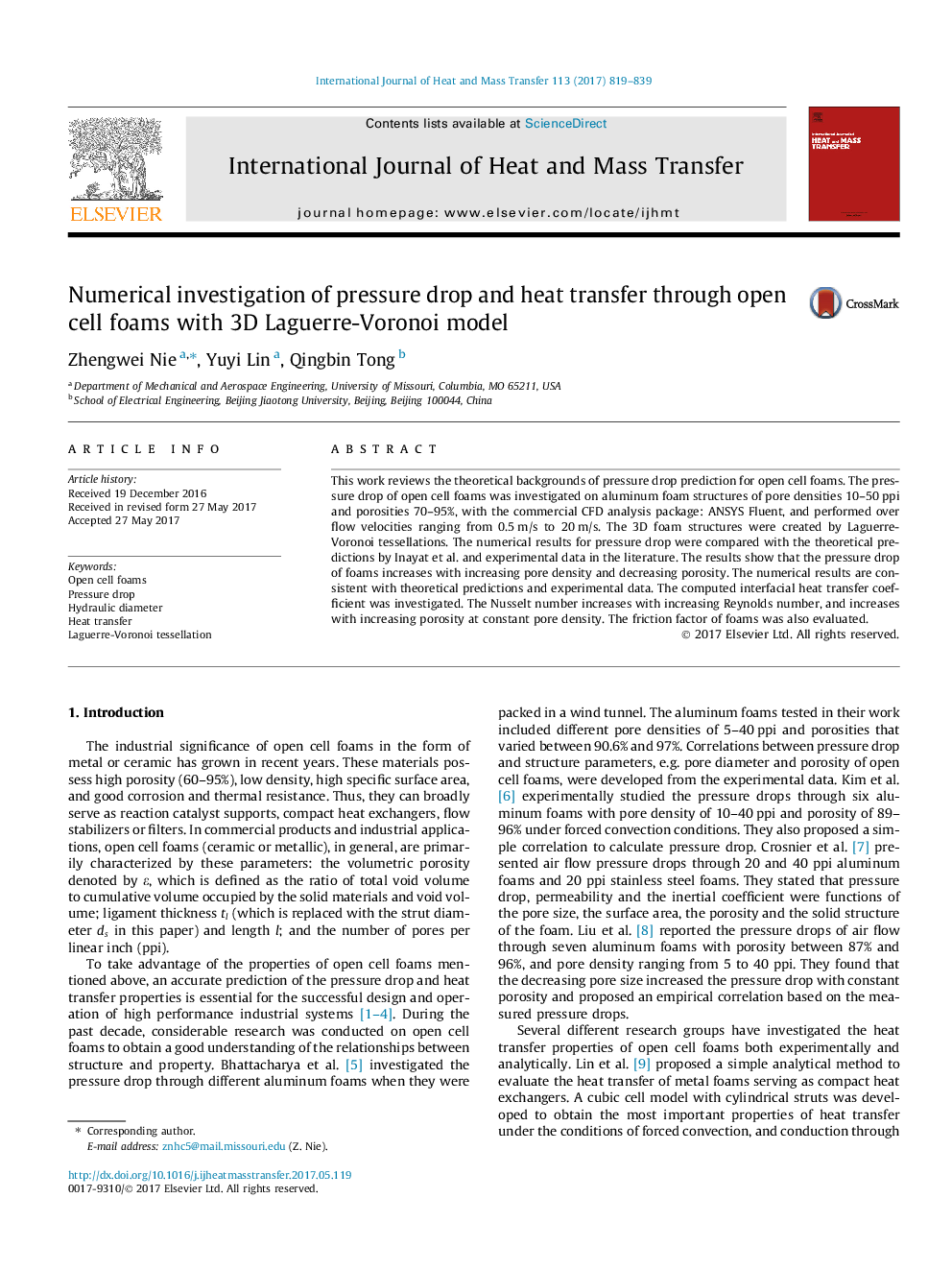| Article ID | Journal | Published Year | Pages | File Type |
|---|---|---|---|---|
| 4994214 | International Journal of Heat and Mass Transfer | 2017 | 21 Pages |
Abstract
This work reviews the theoretical backgrounds of pressure drop prediction for open cell foams. The pressure drop of open cell foams was investigated on aluminum foam structures of pore densities 10-50Â ppi and porosities 70-95%, with the commercial CFD analysis package: ANSYS Fluent, and performed over flow velocities ranging from 0.5Â m/s to 20Â m/s. The 3D foam structures were created by Laguerre-Voronoi tessellations. The numerical results for pressure drop were compared with the theoretical predictions by Inayat et al. and experimental data in the literature. The results show that the pressure drop of foams increases with increasing pore density and decreasing porosity. The numerical results are consistent with theoretical predictions and experimental data. The computed interfacial heat transfer coefficient was investigated. The Nusselt number increases with increasing Reynolds number, and increases with increasing porosity at constant pore density. The friction factor of foams was also evaluated.
Related Topics
Physical Sciences and Engineering
Chemical Engineering
Fluid Flow and Transfer Processes
Authors
Zhengwei Nie, Yuyi Lin, Qingbin Tong,
